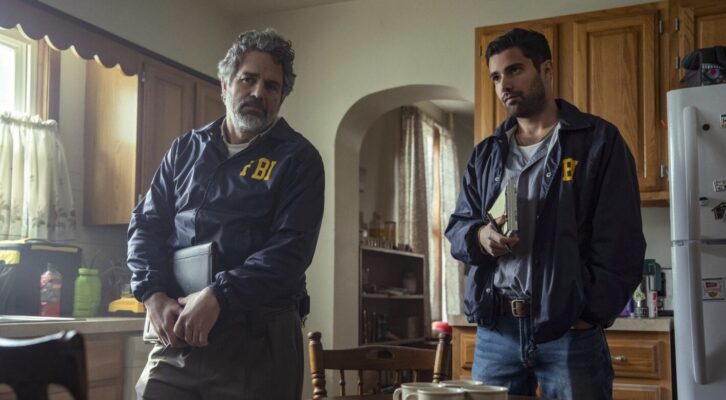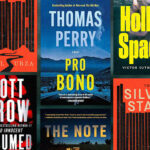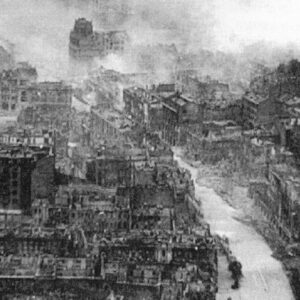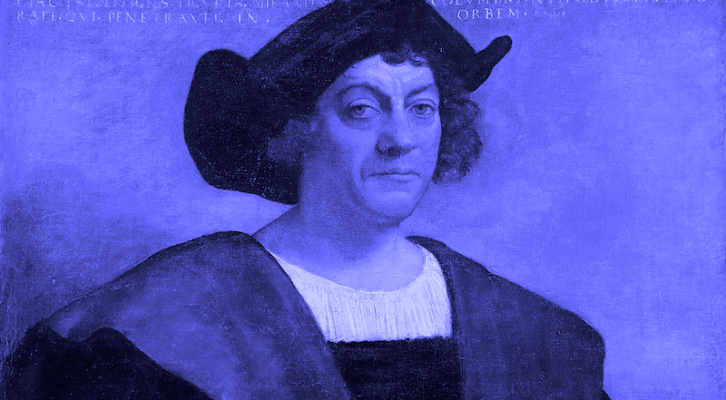
On the Mysteries, Real and Imagined, Surrounding Christopher Columbus
Matthew Restall on the Familiar Political Battleground of Columbus
Christopher Columbus is still alive.
Earlier this year, a social media post by President Trump declared that “Christopher is going to make a major comeback.” The Democrats had done “everything possible to destroy” him and replace his status “with nothing but ‘WOKE’,” but the president was now “reinstating Columbus Day” and bringing it “back from the ashes.”
This is hardly surprising, in that Columbus long ago became a familiar political battleground. Yet while nobody has claimed Columbus cheated death in the literal sense—there have been no sightings to compare to Elvis or Tupac being spotted at the local 7-Eleven—he has in fact in numerous ways become more alive, more present, through the past five centuries, and increasingly so in the last two. Amid all the mysteries, real and imagined, surrounding Columbus’s life, the greatest one is surely this: he has never been destroyed or reduced to ashes. He lives.
Strictly speaking, Columbus was a mere mortal. He arrived in the world as Cristoforo Colombo, in the autumn of 1451 in the Mediterranean port city of Genoa, leaving the world in the Spanish city of Valladolid in 1506 as don Cristóbal Colón. And yet, more than five centuries of battles over his legacy have maintained him in a liminal half-life—or half-lives, as there are many Columbuses, a veritable trans-Atlantic congress of the undead.
Millions of people—billions, even, on multiple continents—have learned and remembered his name. Most have some sense of what he did, that it was momentous, a great achievement, an act of primacy. But was his achievement “great” because he “discovered America” and thus made possible the hemisphere’s “great” nations? Or was it an apocalyptic catastrophe for tens of millions of Indigenous and African peoples because he initiated centuries of enslavement, population collapse, and colonialist exploitation? Or should Columbus neither be blamed nor credited with much at all of what happened in the world after 1492—let alone all of it?
The history of Columbus is not only wrapped up in such vast and thorny questions. It is also shrouded in numerous mysteries that have been woven, displayed, disputed, and “solved,” many of these “solutions” remarkably imaginative and astoundingly far removed from historical reality.
These manufactured mysteries center on Columbus’s name, nationality, place of birth, ancestry, education, religion, intellectual vision, moral fiber, sexual proclivities, and current resting place—all challenged and reclaimed, all made battlegrounds, all apparent mysteries with multiple solutions over which to fight with astonishing fierceness. Over two dozen nations, islands, provinces, or cities claim to be his birthplace. His bones spent time in four or five cities; three of them claim the remains are still there. His prowess as a lover, or sexual predator, or covert devotee of bestiality, has been proclaimed. Some have argued—and some still do—that he was secretly Jewish.
Others insisted that he was one of Catholicism’s greatest heroes. He was for long a controversial candidate for official sainthood, the campaign approved for a time by two popes, and he continues to be both lauded as a divine messenger and derided as an agent of Satan. Monuments to him in city squares are fought over, today more than ever, with passion and sometimes violence. He is hailed as the heroic founder of democratic nations and the evil architect of genocide.
Over two dozen nations, islands, provinces, or cities claim to be his birthplace. His bones spent time in four or five cities; three of them claim the remains are still there.
Some facts are too well-evidenced to be questioned—that the man “sailed the ocean blue” (as the ditty goes) from Spain to the Caribbean in 1492, for example. But how we describe and talk about that simple fact has been itself made into a field for combat. Should we change “famous” to “infamous” and add “European” to “discovery”? Or should we dispense with “discovery” completely, or reverse the agency of encounter to have Indigenous Americans discovering Columbus? All of which is a precursor to defending Columbus Day or renaming it as Indigenous Peoples’ Day, to preserving or pulling down statues, to denouncing or celebrating the entire enterprise of European imperialism in the Americas and the Atlantic world.
But we can better understand both Columbus and world history since 1492 by decoupling the two. Whether your inclination is to defend or denounce Columbus, to champion or bemoan European colonization in the Americas, the cause-and-effect connection between Columbus and post-1492 history is a convenient but misleading myth. The history of the Americas is better understood if we view Columbus not as a uniquely gifted and heroic visionary, but as typical of the Iberian and northern Italian men of his day, another merchant mariner who became an explorer, slave trader, and conquistador-colonist. In turn, that allows us to view more clearly the many manifestations of Columbus as products of imperialism and migration, nationalism and regionalist patriotism.
The unanswered questions surrounding Columbus thus relate to his posthumous survival, to his many afterlives, rather than his historical life; the centuries of invented mysteries are the true Columbus mystery. The claim that we know nothing about him is the greatest canard or fake news about Columbus. His life is better evidenced than that of any of his best-known seafaring contemporaries—Cabot, da Gama, Magellan, Vespucci, and so on. But writings on him are imbued less with an objective appraisal of evidence than with what I call faithistory, a term I have invented to refer to history based on firmly held belief that a particular event occurred.
The claim that we know nothing about him is the greatest canard or fake news about Columbus.
Columbus is one of the most written-about figures in human history, second in the US perhaps only to Lincoln; since Independence, some two thousand books on him have been published. (He also comes third only to Washington and Lincoln as the name memorialized in US place names, buildings, roads, rivers, and mountains—public ones alone number over six thousand—and three-quarters of his statues still stand.) But just as none of the hundreds of the painted and sculpted portraits of him are accurate likenesses, with not one created from life, so do most of those books drawn upon previous ones to defend or denounce partisan positions. Some turn Columbus’s life into a ripping good yarn. Some are billed as historical novels, many more as histories, but it is often hard to tell the two apart; objectivity tends to be crushed by conviction. Whether recreated or invented in print, on canvas, or in stone, Columbus has been forged in the image of the creator.
A few months before President Trump declared that he was giving “Christopher . . . a major comeback” (and a fortnight before his inauguration), another president dominated the news, parading through the city named after Washington and Columbus, spending several days in the US Capitol. Likely few of those who observed President Carter’s flag-draped coffin in the rotunda noticed that Columbus was also there. Three Columbuses, in fact, stare down from the rotunda’s walls, the oldest having been there since 1825. Of the 18 representations of Columbus created for the Capitol, 16 are still there. Both at our nation’s political center and across the country, numerous Columbuses have long been a constant presence. Have they overstayed their welcome or is a major comeback overdue? Must they divide us or can the undead Columbus bring us together?
_________________________
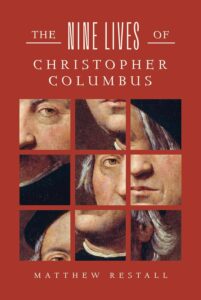
Matthew Restall’s The Nine Lives of Christopher Columbus is available now from W. W. Norton.
Matthew Restall
Matthew Restall is Edwin Erle Sparks Professor of History and Anthropology and director of Latin American studies at Penn State University. He is the author of Seven Myths of the Spanish Conquest and When Montezuma Met Cortes: The True Story of the Meeting That Changed History, among other books. https://matthewrestall.com/











